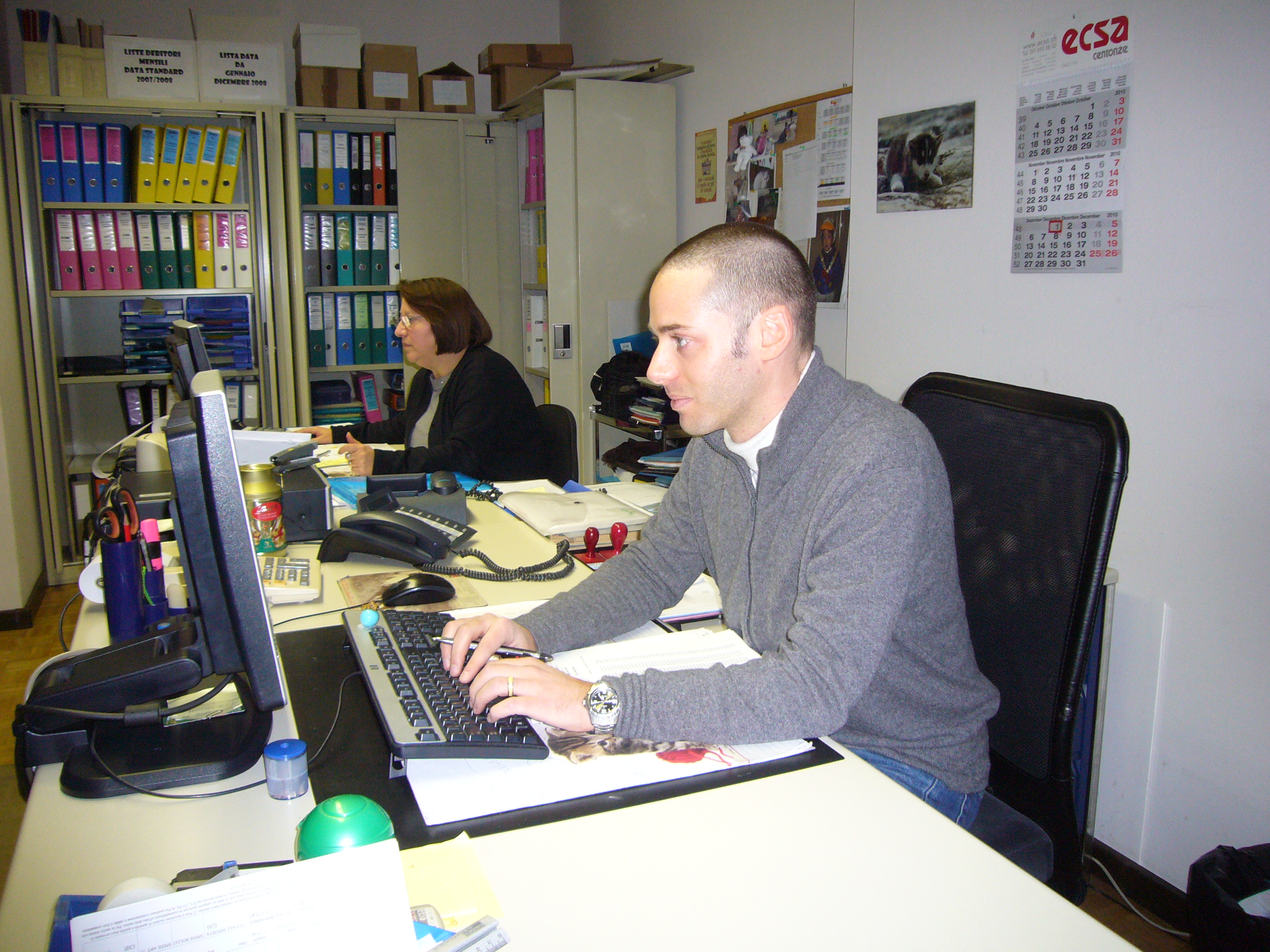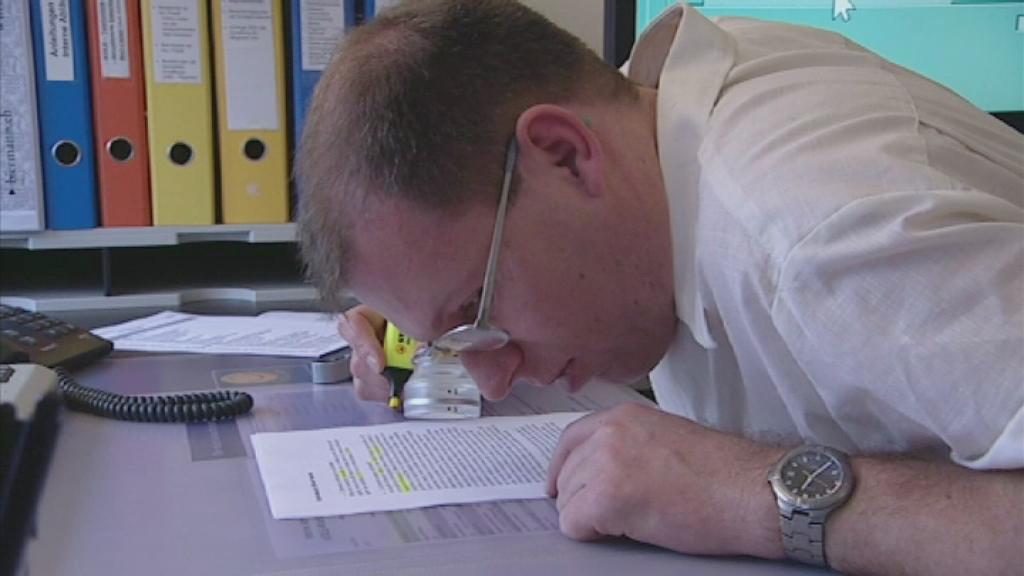Can the disabled join the work force?

Parliament is to discuss imposing job quotas for the disabled within companies – a measure designed to decrease the number of people on disability benefits.
However, as swissinfo.ch has been finding out, even those who have received awards for integrating the disabled within their firms are not totally behind the move.
A House of Representatives committee has called for all private and public companies with 250 employees or more to be obliged have disabled people making up at least one per cent of their workforce. Those failing to do so would be charged the equivalent of one year’s minimum disability insurance payout.
The regulation would be applicable for ten years after the next revision of the law on disability insurance – currently under discussion – comes into force.
“It’s a political decision and of course, parliament has the right to make it. But from a business point of view, it’s a type of extra taxation,” Emanuele Centonze, CEO of the ECSA group told swissinfo.ch. His enterprise, with two disabled employees in its 250-strong workforce, already meets the committee’s demands.
The company, a trader and distributor of oils and chemicals in the Italian-speaking southern canton of Ticino, has had disabled staff for many years and has even received an award from the Ticino Federation for the Integration of the Disabled for its work.
Not for all
“We do it because we can, but not all companies are able to do so. The situation can also change in a company over time,” Centonze said.
Firms can generally only afford to have a social function if the business is doing well, he added.
Centonze is very frank. His company only started employing disabled people by chance: a member of staff became incapacitated and needed to be reintegrated into the workforce. After that the policy was continued voluntarily.
There have been a few cases where integration has not worked out, but he says problems with settling in can happen to all workers, able-bodied or not.
“The disabled have their good and bad points, as we all do,” he points out, adding that the disabled employees are treated just like any other member of staff.
Centonze is pleased that his company is seen as a good example. But that doesn’t mean that he would advise every company to do the same. It is an individual decision and should not be imposed as this would create stress within the firm and for the disabled people concerned.
Personal experience
Fabio Giannetta, one of ECSA’s disabled employees, agrees. “I don’t think that fixing a minimum obligatory quota is the solution,” he told swissinfo.ch.
“You can’t just simply expect to put someone into a firm and leave them to it,” said the 31-year-old, who has been suffering from multiple sclerosis, a disease which attacks the central nervous system, for 19 years.
The illness forced him to give up the idea of university studies and he has spent many years battling periodic paralysis and undergoing various treatments.
Giannetta may look healthy but in actual fact he has lost the vision in his left eye and is physically weak.
“For this reason I have very little energy but many people don’t understand that,” he said. “Perhaps it would be easier if I was in a wheelchair which would make my disability more visible and my limits clearer.”
Giannetta has been working part-time at the ECSA group head office since 2007, after completing a business apprenticeship and working at a local training centre for people with physical disabilities.
Starting at the company was not so easy – he had to learn a new job and adapt to a more complex context. But he is now very happy and appreciates the supportive environment.
A solution?
But Gainnetta does not believe, however, his situation applies to all recipients of disability insurance.
“Not every disabled person is able to make a contribution to a company and not all firms are able to find suitable jobs for disabled people, especially in times of economic crisis,” he said.
For him, the disability insurance problem would be better solved by a “serious approach, not obligations”.
His boss believes employers could be given help in absorbing the cost of integrating disabled people. But Centonze points out that, under such a system, the State would have to prop up such a move.
Disability insurance was launched in 1960. The first three revisions saw the insurance payments increased.
At the end of the 1990s efforts were made to rein in spending. More recipients meant that the scheme was in the red. But the fourth and fifth revisions did not work and by the end of 2009 it was SFr13.9 billion ($14.1 billion) in debt.
In 2009 voters approved a plan to shore up the scheme with a temporary increase in value added tax (VAT). The government has now been tasked with finding measures to balance the scheme’s accounts. There are two parts to the revision.
The ball is now in parliament’s court. It is looking at the first part of the revision which is aimed at reducing the number of insurance recipients by 12,500 in six years. This includes integrating the disabled into the workplace. But there is a problem: there are not enough jobs for the disabled in Switzerland – an estimated are 192,000 needed.
To combat this problem, a House of Representatives committee has proposed the minimum quota. This will be discussed on December 14. If approved it will have to go to the Senate for a final green light.
On December 13, the disabled people’s group Procap submitted a petition of 3,500 signatures to the Federal Social Insurance Office on doing more to integrate disabled people.
The petition was drawn up to mark 50 years of disability insurance and in view of the fact that the insurance is undergoing financial problems and is the subject of political reform and discussion.
The document outlines ten demands, such as the need to integrate disabled people in all aspects of life including the workplace and the need to live independently and with enough financial means.
(Adapted from Italian by Isobel Leybold-Johnson)

In compliance with the JTI standards
More: SWI swissinfo.ch certified by the Journalism Trust Initiative






You can find an overview of ongoing debates with our journalists here. Please join us!
If you want to start a conversation about a topic raised in this article or want to report factual errors, email us at english@swissinfo.ch.